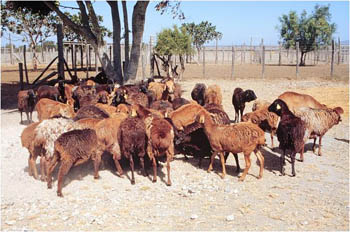|
Exploration & description/Fixed and random effects |
||
|
A random effect is a component of the data that has a degree of randomness associated with it, whereas a fixed effect has no random connotation. An example of a fixed effect in this case study would be the sex of a lamb. It is fixed because it can only have one of two values: male and female. On the other hand, the influence of the ram
on the growth of its offspring is usually considered to be a
random effect. In making this assumption the researcher assumes
that the sample of rams used in the study is a random selection
of rams from the particular genotype at large.
|

|
|
|
Thus, in this study, the rams are regarded as a random representation of rams from Red Maasai and Dorper breeds. If such an effect is defined as random then any interaction involving the effect and any other effect, fixed or random, will also be random – and this has implications for the inferences made from the data. For instance if year is also declared random in this model, and the breed * year interaction is included in the analysis, then any inferences made about breed will be for the population of years which our sample is deemed to represent. If the breed * year interaction is not included, or if year is regarded as a fixed effect, then inferences will apply to the performance of the breeds only across the six years in question. |
||